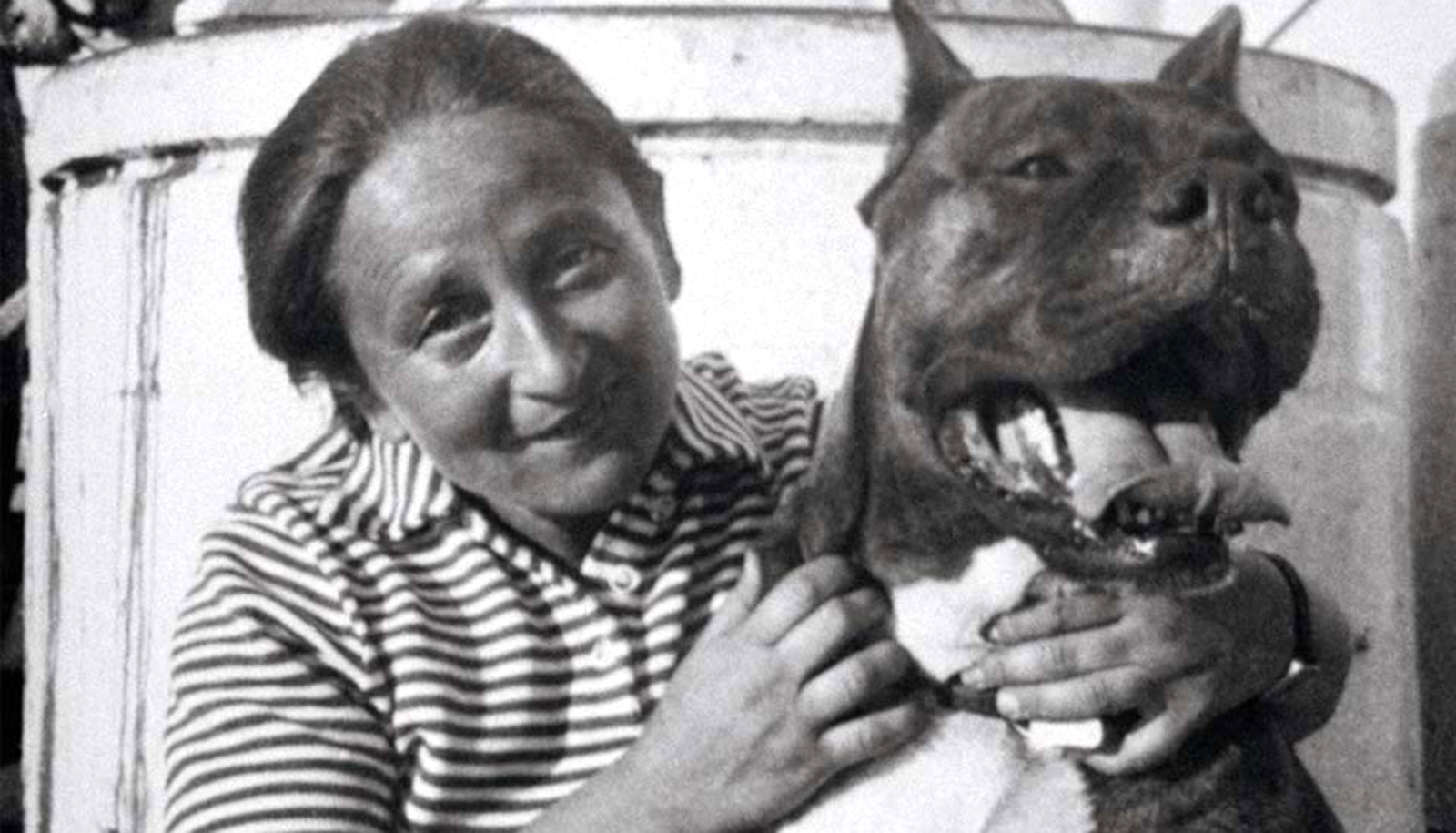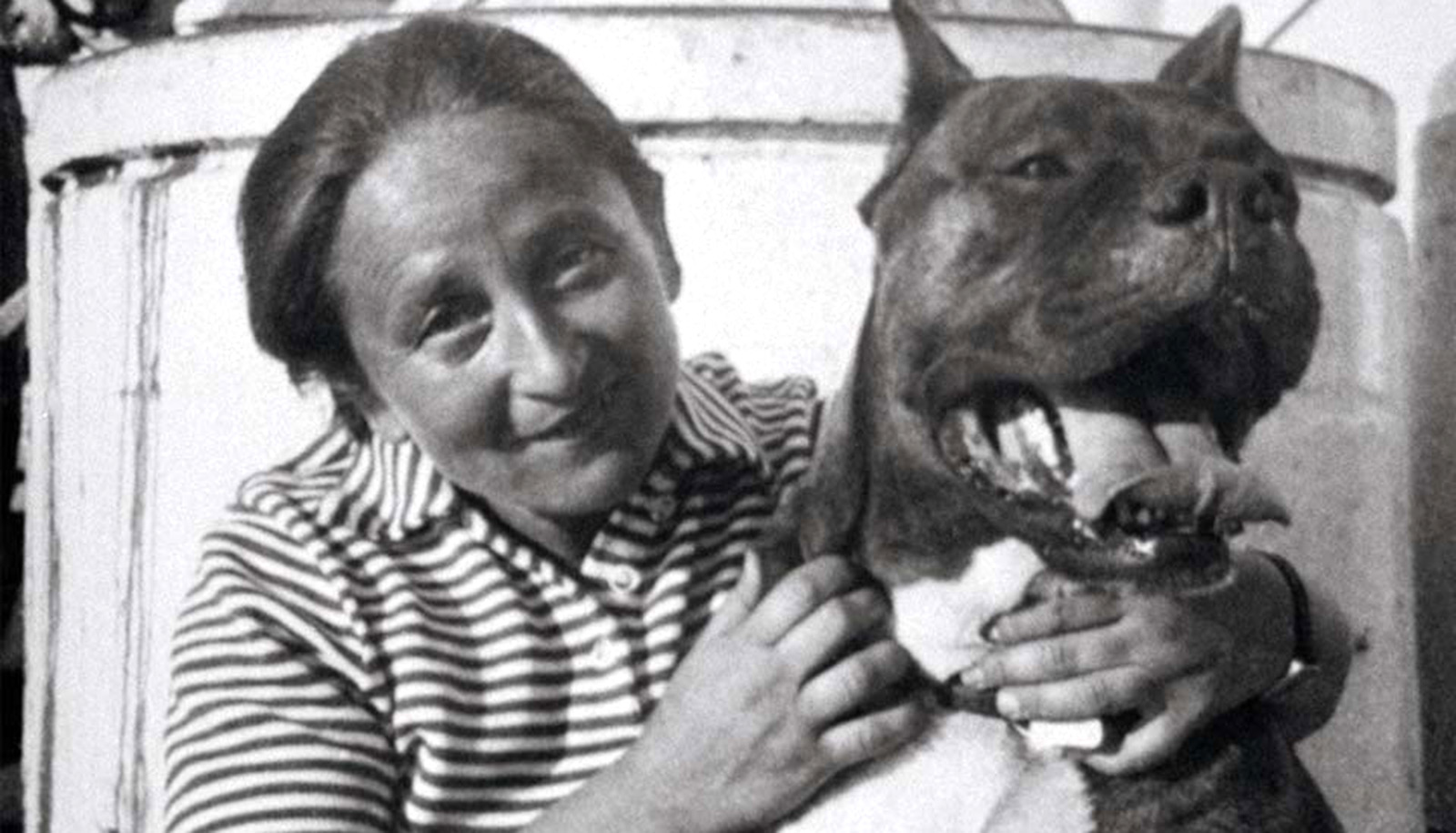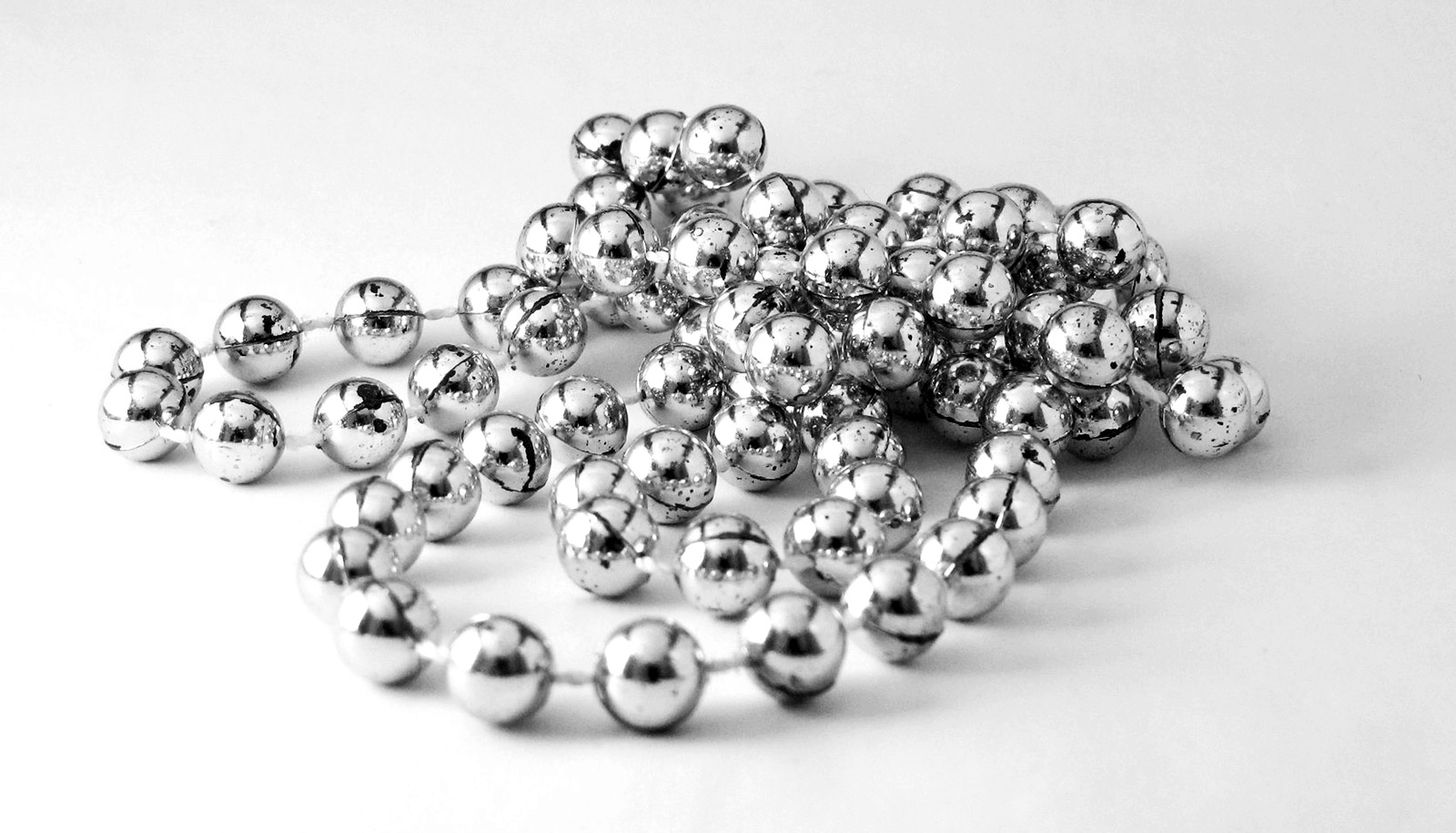Share this
Article
You are free to share this article under the Attribution 4.0 International license.
Toward the end of her life, the Austrian-born Jewish scientist Rudolphina Menzel acknowledged a horrifying reality: the dog-training techniques she pioneered had been used by the Nazis to commit atrocities.
“I suffered a lot knowing that my students in Austria and Germany were using the knowledge they acquired from me to use dogs to exterminate my people and other peoples,” she said in an interview roughly 10 years before her death in 1973.
“She had to constantly negotiate a shifting kaleidoscope of political, scientific, and cultural considerations…”
But in one of the more remarkable ironies of 20th-century history, Menzel also trained the dogs that helped create the state of Israel. She was a trailblazing Zionist pioneer.
A new book, Canine Pioneer: The Extraordinary Life of Rudolphina Menzel (Brandeis Press, 2023), chronicles Menzel’s life and career, exploring her seminal role in the development of cynology (the scientific study of the domestic dog) and modern Jewish, European, and Middle Eastern history.
Edited by the anthropologist Susan M. Kahn, the book details Menzel’s role in training the dogs used by the German military and police in the 1920s and early 1930s—and how she helped the fledgling Zionist state secure its independence from Britain and win the 1948 Arab-Israeli War.
“Rudolphina’s long, complicated, and eventful life was peppered with triumphs, marred by tragedies, and suffused with ideological tensions,” Kahn writes. “She had to constantly negotiate a shifting kaleidoscope of political, scientific, and cultural considerations in order to realize her extraordinarily ambitious scientific goals and activist objectives.”
Zionist and scientist
Menzel was born in 1891 to an upper-middle-class, assimilated Jewish Viennese family.
During childhood, she chanced on a discarded copy of the Zionist newspaper Die Welt and developed what became a lifelong commitment to the cause. By the time she earned her doctorate in chemistry from the University of Vienna in 1914, she was also an ardent socialist.
After she and her husband Rudolph settled in the northern Austrian city of Linz following World War I, Menzel met Austrian veterinarian and renowned dog breeder Joseph Bodingbauer. He gave the Menzels their first dog, a robust, brindle-colored boxer she named Mowgli.
Kahn details how and why Menzel transformed her love of dogs into a serious professional undertaking that enabled her to investigate scientific questions and solve societal problems.
She quickly mastered the burgeoning scientific field of cynology and designed an original, 16-year research study where she observed and recorded the daily behaviors of hundreds of boxers, taking note of which behavioral traits were genetic and how the environment shaped their temperament.
She also became fascinated with the dimensions of canine perception, particularly olfaction. In a landmark 1930 paper, she demonstrated that with the right training, dogs could discern the individual scents of particular human beings. She then trained her dogs to recognize a person’s smell at different times and under different conditions, making them ideal for tracking criminals and suspects.
Rise of the Nazis
Inevitably, Menzel’s work drew the interest of the German and Austrian police and military. She worked as a sought-after consultant and lectured to both groups on her techniques for breeding and training dogs that were obedient, intelligent, and skilled at police work.
It was standard practice to train police dogs in a foreign language so criminals or prisoners could not communicate with them. Menzel, whose Zionism inspired her to learn Hebrew, trained her dogs to obey commands in the language.
In 1934, a year after Hitler came to power, Menzel stopped working for Austria and Germany. But her dogs and training methods remained used by authorities well after the Nazis rose to power. It’s likely that some of the hounds deployed by the Nazis were, at least originally, trained to obey commands in Hebrew.
After the Nazis annexed Austria in 1938, local authorities in Menzel’s hometown ordered the “immediate removal of the Jewish kennel” on her property. In August of that year, she and her husband fled to Palestine with forged papers, taking only two of their hundreds of boxers.
Menzel in Palestine
Many early Zionist settlers were socialists and considered having pets a bourgeois habit out of keeping with the pioneering ethos. In addition, Jews in general had long had an ambivalent relationship with the canine species. The Hebrew Bible and the rabbinical commentaries in the Talmud depict dogs as unclean. In Eastern Europe, “du bist a hunt mit di oyern”—”you are a dog with ears” in Yiddish—was considered one of the worst insults.
Menzel changed all this by persuading Zionists that dogs could be much more than pets. They could be workers that protected Jewish lives and property. “Help us reclaim the dog for our people,” she wrote to her fellow Jews in Palestine in 1943. “Make room for a new pioneering path to reclaim the dog for the building of our country.”
Many of the dogs in Palestine were feral and free-roaming. Menzel, who coined the term Canaan dogs to describe them, bred and trained them. She discovered that some of these so-called “pariah dogs” could be loyal, intelligent, resourceful, and forgiving.
During World War II, Menzel worked with the British, equipping them with dogs to detect the mines the Germans laid in North Africa. But she made them promise never to use the animals against the Jews in Palestine, still under British control.
Menzel’s dogs were also used to detect intruders and patrol Jewish land, protecting against the Palestinians fighting Zionist settlers. When the 1948 war broke out against the surrounding Arab nations, her dogs were deployed by the Haganah, the main Zionist military organization. They transported messages by following scent trails laid between command centers and soldiers in the field. They also carried medical supplies and ammunition in saddles on their backs.
Columns of military dogs marched through the streets of Haifa and Tel Aviv in the 1949 victory parades.
Dogs “were tools that built the country no less than the plow, the tractor, the gun, and the water tower,” Menzel later wrote.
A change of focus
In the early 1950s, Menzel radically shifted the focus of her work and began training seeing-eye dogs. She founded the Israel Institute for Orientation and Mobility of the Blind, the first guide-dog institute in the Middle East and undertook extensive studies of the mobility needs of people with visual disabilities in Israel.
Menzel’s death went largely unnoticed, and her contributions to cynology were all but forgotten. This may be because of sexism or because most of her scientific work was never translated into English and failed to find a broader audience.
Kahn sees her book as an important first step to lifting Rudolphina Menzel out of obscurity.
Source: Brandeis University










